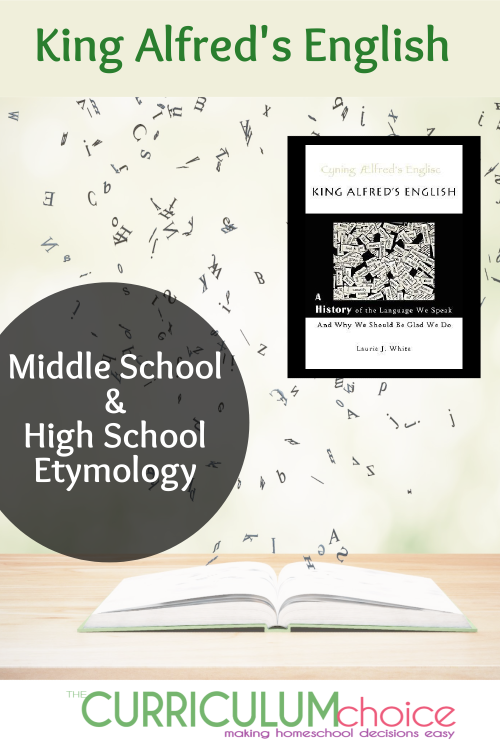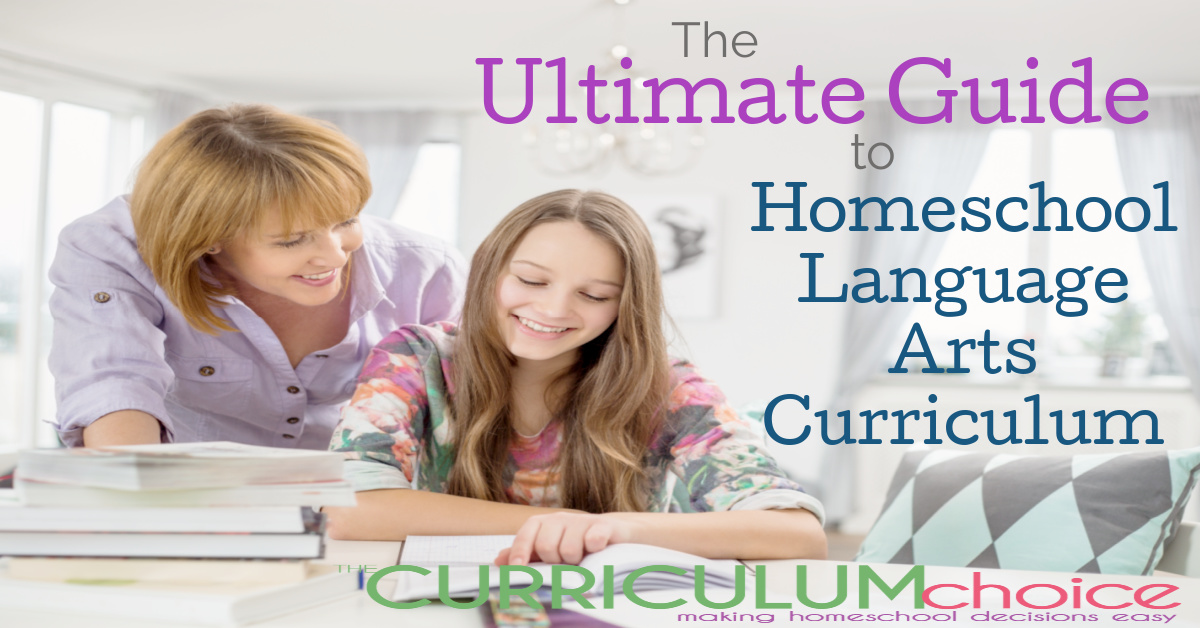King Alfred’s English offers an intriguing look at the development of our language is a combination study in both history and English with a bit of linguistics woven throughout. Surprising facts about people and wars, quirky details about spelling and grammar, humorous word histories, all are packed together to form a thoroughly enjoyable and educational overview of English history from 55 BC to 1611, the year the King James Bible was published.

Two of our TCC Authors are here to share their experiences using King Alfred’s English in their homeschool!
Eva’s Experience with King Alfred’s English (Middle School)
I first discovered King Alfred’s English in 2012 when a friend of mine reviewed it on her blog. With her glowing praise for the book, I ordered a copy. However, my kids were just too young then so it remained on my library shelves until this fall.
We have gradually been progressing our kids to become independent learners. When my daughter began 8th grade this past autumn, we sat down and mapped out our shared vision for high school. What classes are of interest to her? Where does she see herself in five years?
Languages are important to her and she is determined to begin study of a third language in a year or two (she’s been studying Mandarin since she was five years old). As such, I knew she would be interested in etymology or the study of the origin of words and the way in which their meanings have changed throughout history.

We’ve always been Unschoolers at heart, so a traditional English class would have bored her to tears. As we created her five-year plan, I remembered the black and white text that had always intrigued me. I pulled it down and suggested she work through the material independently. She wasn’t sure at first but agreed to give it a try.
About King Alfred’s English
Aimed at students grades 7-12, King Alfred’s English is not only entertaining but very educational. This concise book gives an overview of the history of Europe, explaining the shifts of the invasions around England, France, Germany, Spain, Ireland, Norway, Sweden, and Italy. The supplementary material provided at The Shorter Word was of particular interest. Here you’ll have free access to a variety of material including:
- Worksheets for each chapter
- Tests that cover each unit
- Original source material
- Online articles
- Suggested movies and videos
Each week, I would assign the review questions and the Not to Be Missed activities. I would then ask that she select one or more of the Expanding the Lesson activities. We would also watch one (or more) of the suggested movies as a family.
Coincidentally, while she worked through the lessons in the book, were also transitioned between history texts, moving from ancient to medieval times. We also traveled to Italy as a family and we were thereby immersed in Western Civilization and history.
My daughter loved this book and would frequently share anecdotes and tidbits she had learned with us that tied into our history readings or the places we had visited on our travels. She also developed a keen interest in Celtic mythology as a result of the lessons in King Alfred’s English. I love curricula that sparks new passions.
Thoughts from Annie Kate On King Alfred’s English (High School)
This year I was looking for a way to teach my girls about the English language without teaching grammar itself. I wanted to give them an understanding of its beauty and history so that they would learn to love it and also be able to use it more skillfully. And then I was offered King Alfred’s English to review. What a perfect resource to meet those needs! {Disclosure: I received a review copy of this book from Laurie J. White, and have expressed my own honest opinions.}
The subject material itself is fascinating, with section titles such as
- Fighting Druids,
- How Do You Un-Invite a Jute,
- Language—Evidence for Design,
- From Saxon Runes to Roman Alphabet,
- The Original Meaning of Berserk,
- Losing our Gutterals,
- The Mystery of English Spelling,
- Scriptures for a Ploughboy,
- Heads Begin to Roll,
- Shakespeare in a Psalm,
- Those Lingering Pronouns for God,
- How Words Morph and Mutate.
Laurie’s writing is enthusiastic and clear, full of examples, quotations, and illustrations. The timeline she has developed is a brilliant outline of English history, simple enough to memorize easily yet broad enough to serve as a framework for all the many details. And details there are, each one more fascinating than the next. Occasionally we even got lost in them.
But there is more. With Laurie’s other resources, it is easy to use this book into a course. King Alfred’s English is written for grades 7-12 and can be either a part of an English or history course or a full semester course in either subject.
There are online worksheets and tests with answer keys if you want formal marks. Laurie also recommends other resources such as videos clips, websites, and movies. If you want this to be a full course you will need to take advantage of many of these resources and probably add some writing. We enjoyed video clips about building Hadrian’s wall, paged through the Book of Kells, researched the Rosetta stone, ‘walked’ around Stonehenge, and more, and will be using this resource list in the future for other history, church history, and literature courses.
Christian Based
The fact that Laurie is a Christian shines through her book. The English language is, after all, very closely linked with the history of Christianity in England; seeing all this through the eyes of a Christian is a special treat. And, to my amazement, even the languages of the world show evidence that we were created by design, not chance. (Shortly after we studied that concept in King Alfred’s English, I heard the same thing discussed at the Dig and Delve Conference for college students.)
The girls have learned a lot about history, reviewed things they learned from The History of English Literature for Boys and Girls, and studied the intricacies of language development. Our time spent with King Alfred’s English has been rewarding in every way.
We recommend King Alfred’s English as a ‘living book’, suitable to teach and inspire simultaneously. It could be used as a welcome break from grammar, an interesting addition to history lessons, or just a book to read for fun. The content is important, God-honoring, and, with the resource list, can be adapted endlessly. I think every homeschooled teen would benefit from this course.
More Homeschool Language Arts Options

The Ultimate Guide to Homeschool Language Arts Curriculum – Looking for a Homeschool Language Arts curriculum that suits your family’s needs? Need just a spelling or writing program? This list is sure to have what you are looking for! This list contains full homeschool language arts curricula, as well as resources for reading/literature, writing, spelling, grammar and handwriting.


I’m glad you enjoyed this as much as we did. It is truly an outstanding resource.
Eva,
I just shared this post on my King Alfred’s English Facebook page–thank you so much for a great review. I’m really glad you and your daughter have enjoyed the book. I also love the picture of her reading it. May I use it elsewhere in promotional stuff? (“Stuff” sounds so literary, doesn’t it?) I don’t do much advertising but you caught the perfect feel for a student reading the book.It’s absolutely fine if you don’t feel comfortable with that though. Again, thanks for the review!
Laurie
Yes, of course, Laurie. I’d love for you to share my post and/or the photo of my daughter using your book. Thank you for the opportunity. 🙂
This looks like it *might* even intrigue my child who only thinks languages JRR Tolkien invented are worth studying! Thank you so much for sharing this resource!
My daughter loves Tolkien, too. She is presently taking a literature course, “Worlds and Writings of J.R. R. Tolkien”